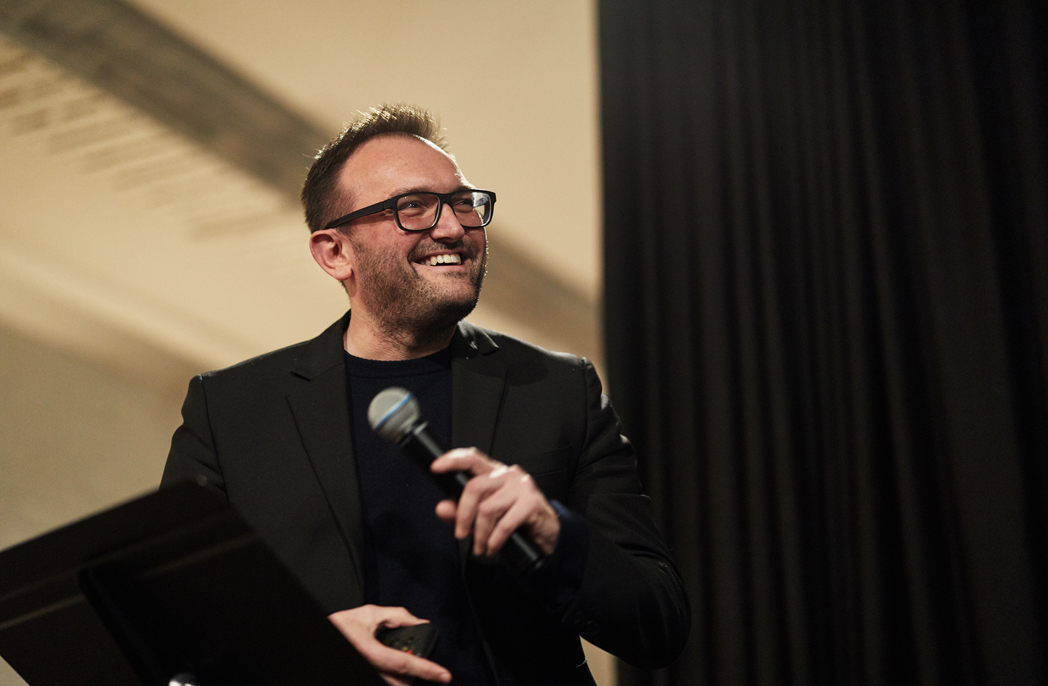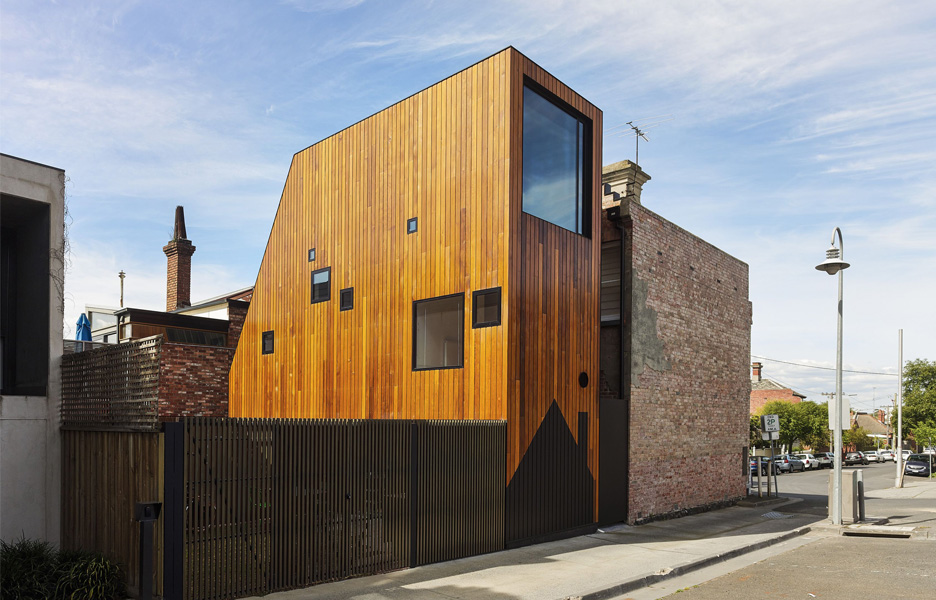
The future of interiors
Share
Leaders in their field of interior design Rob Backhouse and Scott Walker talk to inside about the future of interiors as they see it. With years of experience between them, they are perfectly poised to explore the way interior design impacts our lives and discuss the possibilities for the future on the national and international stage.
inside: Can you tell me how you see the future of interiors? What aspects will be most important in interior design in the future?
Rob Backhouse: As with most industries, technology is having an increasingly stronger impact on interior design and will continue to do so in the future. There are a growing number of applications and technologies that are helping designers work in more diverse and different ways. There is a greater emphasis on visualisation and clients being able to see and experience the design.
Google X’s Flux, for example, uses artificial intelligence (AI) to speed up the design process at a phenomenal rate. Basically, you input quantitative data and AI makes everything happen within seconds. Ultimately, though, the production becomes quite different and a separate process. This type of technology is beneficial as it can design base buildings, develop documentation at great speeds and complete adjustments, but as designers, we are still required to do more than that.
Scott Walker: I think that is the interesting thing, even as the technology develops and will have the ability to take some of the time-consuming tasks out of our day-to-day routine, we will still be required to do the creative thinking.
To us as designers, creative design thinking is always, and will always be, important. It is on us as a profession to show the value and intelligence of what we do to ensure we have a sustainable future. It is our role to show the importance of design.
Experience will also continue to play an important role in design well into the future. A recent study found that 78 percent of Millennials would choose to spend money on a desirable experience over something materialistic. So when it comes to interiors, we need to think about how we can make it an experience, whether it be a hospitality venue, a workplace or even a residential property.
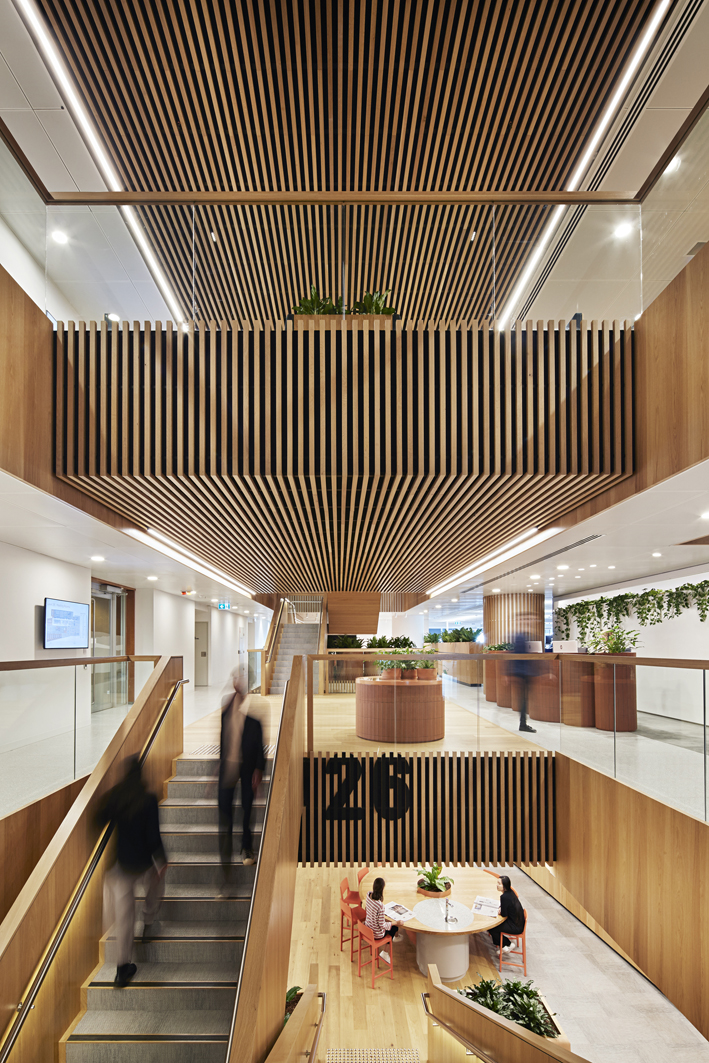
Australian Super- image by Shannon McGrath
What are the greatest changes in interior design from, say, a decade ago compared to now? Would you say that interior design is more important at this time than in the past?
RB: No, it’s always been important.
Clients are becoming more literate though and are wanting great design, not just OK, functional spaces. They are wanting to see the benefits well-designed interiors bring to a space and the ability for design to influence change.
SW: When you think about it, 10 years isn’t actually that long ago. But there have definitely been changes in the industry. As an example, 10 (and even more) years ago designers would work on the entire process from briefing to documentation to implementation – a more generalist approach. Nowadays, the process tends to be broken down into specialist areas. This isn’t necessarily a bad thing though as it allows a project-specific team to be created with the best people to deliver the best result for the client.
Does interior design in a project play a greater role in the way we live our lives today? If so, how does the design of an interior add to our well-being and enrich our lives? And how do you see this role in the future?
RB: Absolutely. The way people live, work and play is changing, and design is changing to accommodate this. The rise of co-working spaces around the world, for example, has seen a change in client needs to move towards including hospitality style design elements to blur the lines of work and play.
A project we are currently working on in the west coast of the US is taking this one step further by including areas of residential, workplace and social. These spaces include communal gardens and exercise areas. They activate public space and have the ability to decrease commute time. So this ability to work anywhere, anytime, means design needs to be flexible and accommodate the changing needs of people who use the space.
SW: There is also an increased requirement on compiling evidence to show clients the tangible outcomes of design. Properly engaged, procured, and rewarded so we can show our clients how design impacts the users of the space.
In the last few years, we’ve worked on a number of workplace projects that have made a real impact on company culture and staff well-being, according to post-occupancy studies. For example, last year we designed a new head office in Sydney’s Barangaroo where 73 percent of employees said the workplace makes them more productive. Similarly, on one of our projects in Melbourne’s Docklands, 70 percent of employees reported feeling healthier after moving into their new space.
It’s much less about pure functionalism. Think back to the 1980s to 2000s, it was all about tightly packed desks, bland pods and maximum use of space. It’s so much different now. Design should be used as a device to support and drive culture and reinforce brand, not just operational efficiencies.
Have you seen a change in the aspirations of your clients when it comes to what is expected or what they want in an interiors project? If yes, what has contributed to this? Do you think that social media has played a part?
RB: Social media has a lot to answer for. You can take a nice photo, but that doesn’t make you a designer. This is the rise of the stylist. Decorators have always been there, but social media has increased people’s opinions on their ability. This increase in social media has definitely altered the aspirations of clients, particularly in the hospitality and retail sector where some clients are wanting ‘Instagramable’ spaces. There is more of a call for design to represent the brand and for the design to become the brand. The design also needs to support the wider aspirational strategy and assist in operating better as a business.
SW: There are also more design shows on TV, and people have more access to this type of experience. But just like watching a cooking show doesn’t make you a chef or critic, watching Grand Designs doesn’t make you an architect or a designer. With that being said, what these shows do so well is enable people to see different design ideas outside of what they usually might think is doable and this can be great for projects, as clients become more involved. As designers, it is our job to ensure the client’s aspirations are met and the not so favourable ideas disappear; it is more than just a symbolic exercise.
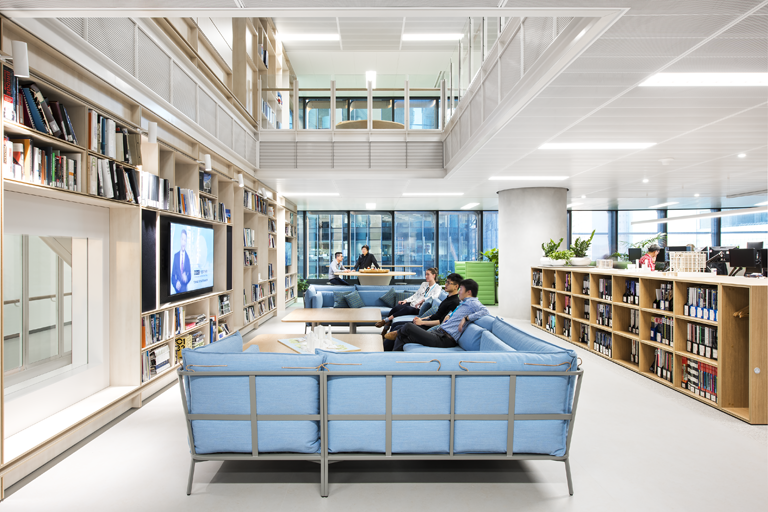
Lendlease- image by Nicole England
Are clients better informed or so overwhelmed with information that they don’t want to be involved and come to you to curate a choice for them? Do you see informed client collaboration increasing in the future?
RB: Clients are being more involved, and this is good. Sometimes this involvement can go a bit far, however, to the point of meddling, and there is a danger in disrupting the time and space designers need to think and explore new ideas. This time allows designers to be more innovative within the design process leading to something more valuable for the client.
SW: Yes. Clients are becoming immersed in the experience and we are seeing that they are wanting to, not just so they control the project. More and more we are collaborating with a wide variety of contributors and we see a client as being one of those contributors.
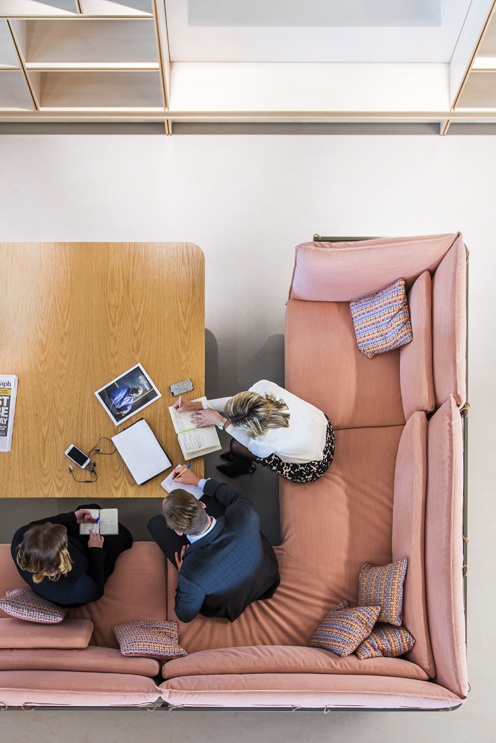
Lendlease office
And where are interiors heading? Is it more about sustainable local product rather than product from overseas and keeping ahead of one’s peers in the design stakes? What are clients looking for ultimately in their interiors?
RB: Ultimately, design is about delivering the best outcome for the client, based on the brief. Sustainable design, using local products, on trend design etc are all great, but not if it doesn’t meet the brief. Clients have different requirements for different spaces, and every project is different.
We are cognisant of our peers. We see them as peers, not just competitors. If you look at peers only as competitors it can create an unnecessary culture of competition. We need to just design great spaces, for great clients.
SW: Completely agree. Sustainability is a given now, and in the future we will no doubt see legal obligation to achieve a certain level of sustainability too. So I think that isn’t so much about where interiors are heading; it’s more about how we can use the tools we have to ensure we design places people love and places both we and the client are proud of.
We are looking at our peer group on a much more international level. The context has changed now. It’s more international and diverse. We are always looking at what other people are doing, but don’t necessarily consider it a competition.
This article originally appeared in inside 100 – available online and digitally through Zinio.
You Might also Like
